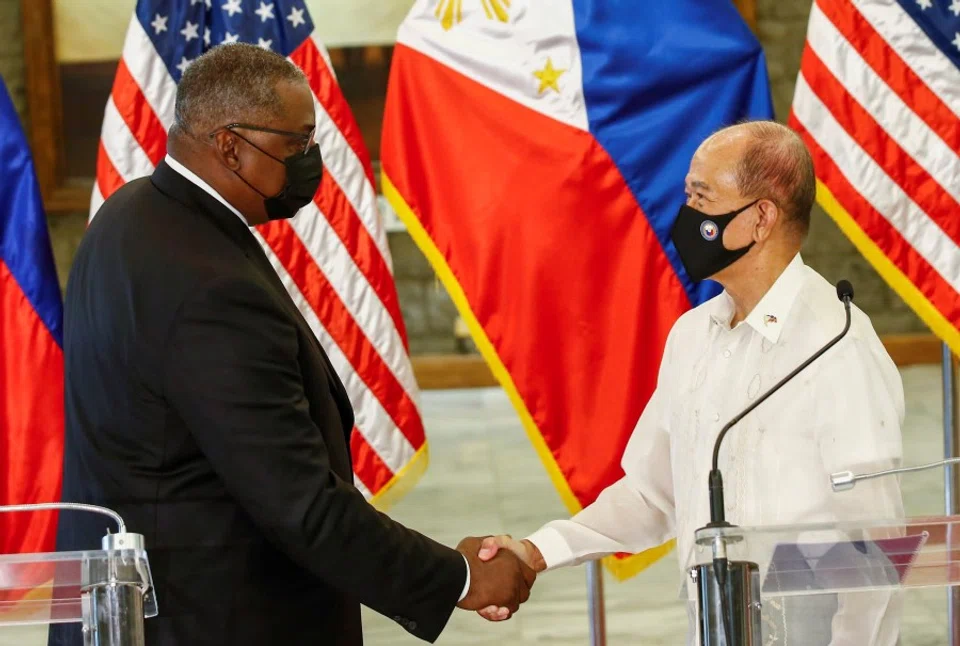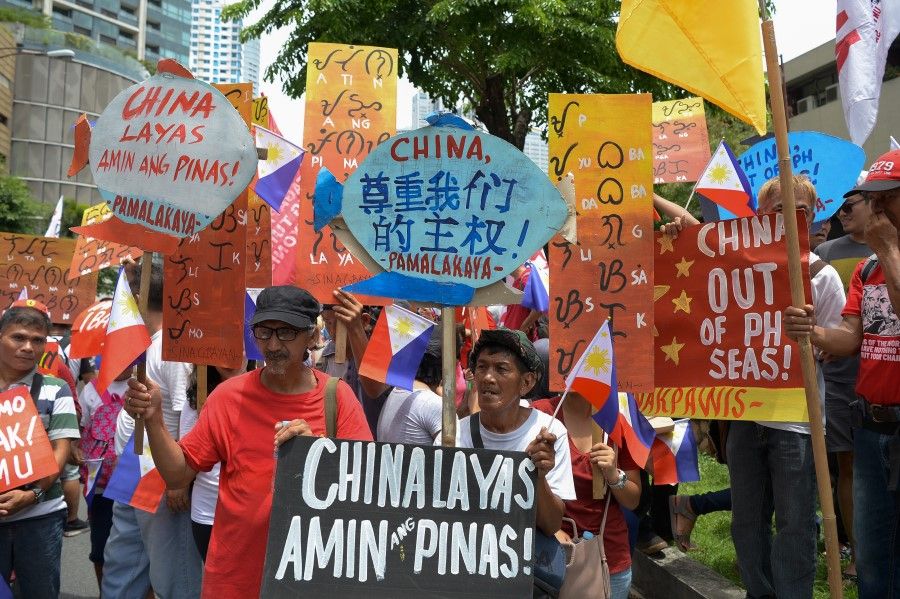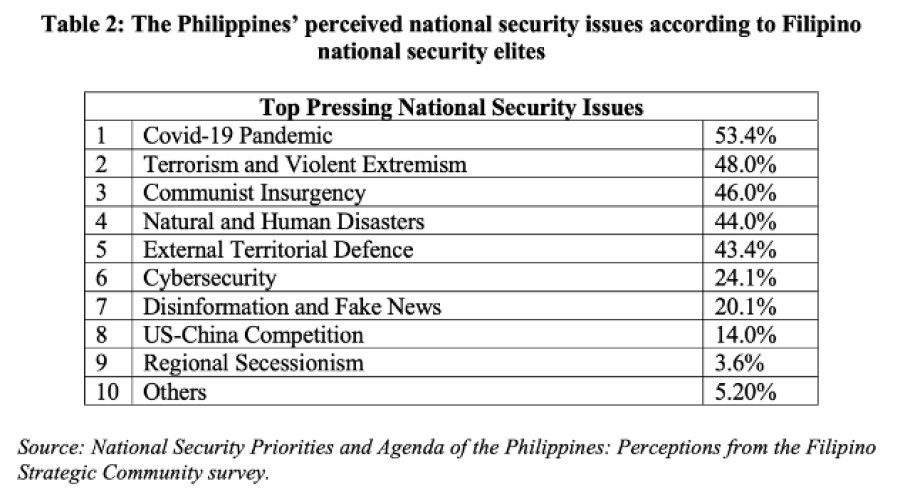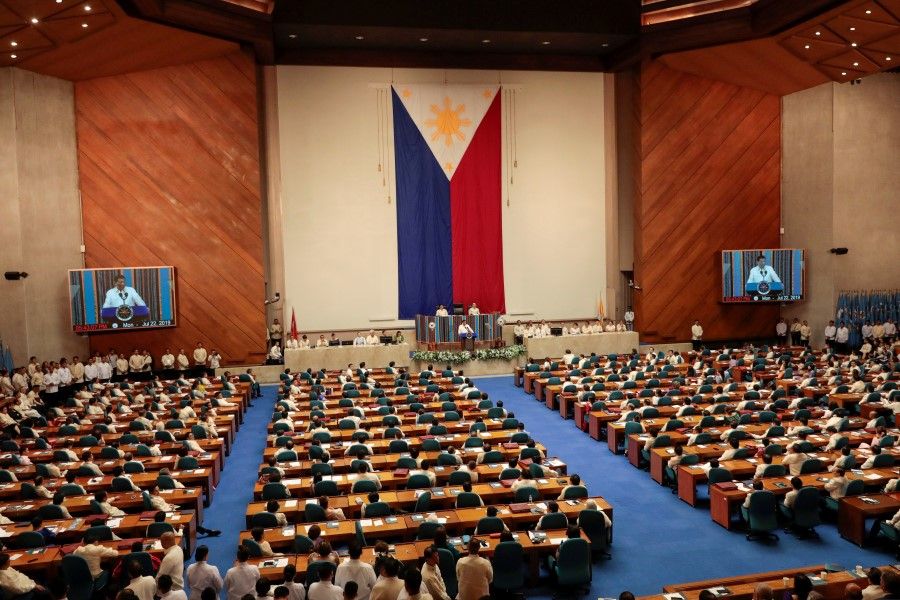Mind the gaps, fill the needs: A strategic outlook for the Philippine-US alliance

Tensions between the Philippines and the US have always been brewing beneath the surface, despite historically cordial diplomatic relations and generally convergent strategic interests on key foreign policy issues, such as regional balance of power and military modernisation. Critics of the relationship in the Philippines range from those who seek to reinforce the alliance by rectifying the perceived unequal treatment of Manila when compared to other US military partners, to the more radical option of rethinking the very wisdom of the alliance amidst the rise of China as the US's strategic competitor. These underlying concerns became more pronounced under the presidency of Rodrigo Duterte, which saw the alliance unnerved by otherwise previously dismissible concerns. The Visiting Forces Agreement, and pretty much the entire security alliance, was in jeopardy, but fortunately things did not go too far.
Historically, the alliance has been mutually beneficial to both countries. The US found a reliable ally in the Philippines on numerous instances, including the Korean War, the Vietnam War, the Cold War and the global war on terror, among others. Meanwhile, the Philippines receives aid from the US to modernise its military, and has been working with American advisers for counterinsurgency and counterterrorism campaigns. In the fight against the Islamic State and during the Battle of Marawi, the US extended technical assistance and invested millions of dollars in training and intelligence funding for the Philippines.
Based on a 2020 survey of Filipino security elites, the US continues to be critical in the Philippines' defence and foreign policies as the preferred partner of choice, alongside other members of the Quadrilateral Security Dialogue (Quad) (See Table 1). The Philippines also indicated its calibrated support of the Quad and more recently the Australia-UK-US (AUKUS) security pact - both of which are US-led initiatives that seek to reinforce its place in the region.

The perception of the US as a stabilising factor in the region is a prevalent view in the Philippines. However, the deficits in its economic and technological engagements, as well as the modest amount of American foreign military assistance to Manila as compared to other US treaty allies and non-treaty partners, leave many to wonder about and question its commitment in general and also its asymmetric treatment across regional security partners in particular.
...the disparaging effect of being frequently left out in high-level visits and security dialogues is a potent elixir for alliance disruptions as evidenced by the Duterte administration's reactions.
Philippine-US alliance: an enhanced agenda
Disparities across US alliances in Asia
The disparity of treatment across US alliances in Asia has been noted and has not escaped the attention of Manila's security establishment. The development of new defence capabilities and improvement of interoperability between the US and countries such as Japan, South Korea, and Australia has been undertaken through deeply institutionalised relations and ironclad commitments established between their militaries. In contrast, alliance sceptics in the Philippines have railed against the Obama administration's ambiguity on whether a possible conflict between the Philippines and China in the South China Sea (SCS) would trigger US obligations under Article IV of the Mutual Defense Treaty (MDT).
Both the Trump and Biden administrations have since made commitments to apply the MDT in the SCS, but the vacillation from one position to another reflects broader ambivalence and uncertainty. Prioritisation for an alliance as critical as the MDT appears lacklustre. For example, the Interim National Security Strategic Guidance mentions by name only Vietnam and Singapore - two important partners but not US allies in Southeast Asia. For many in Asia, especially in the Philippines, US Vice-President Kamala Harris's visit to Singapore and Hanoi last August 2021 depicts the shift in US regional priorities. In his early 2021 Asia tour, US Secretary of State Antony Blinken visited Seoul and Tokyo but omitted Manila and Bangkok - the only two US allies in Southeast Asia. Daniel J. Kritenbrink, the newly minted assistant secretary of state for East Asia and the Pacific, on his trip to the Asia Pacific only had plans to visit Jakarta, Kuala Lumpur, Bangkok, and Singapore, but not Manila.
In light of the Philippines' importance to the US's Indo-Pacific strategy, the disparaging effect of being frequently left out in high-level visits and security dialogues is a potent elixir for alliance disruptions as evidenced by the Duterte administration's reactions. Manila is taking notice of these developments, regardless of how major or minor they may seem.
The same report brings attention to the lack of diversity in Philippine-US security cooperation with a tunnel-vision focus on counterterrorism operations in Mindanao.
Alliances maintenance in Asia
The above developments fit into the assessment by the Washington-based Centre for Strategic and International Studies (CSIS) that US ties with its alliances in Southeast Asia have substantially weakened in recent years, with relatively little effort by Washington to strengthen its alliances with the Philippines (and Thailand). According to the CSIS report titled Alliances in Need of Upkeep, the changing strategic environment, shifting internal politics, and China's growing influence and aggressive outreach have contributed to this downward trend. This neglect has and will come at a strategic cost. Ties with the Philippines (and Thailand) remain important for the US because of the benefits of peacetime bilateral cooperation as well as in defence planning above or just below the threshold of conflict. The US strategy in the Indo-Pacific will be severely affected and weakened if China manages to sway the two countries closer to its ambit. After all, Southeast Asia forms a lynchpin of the strategy and the SCS disputes remain a core regional flashpoint.

Going beyond traditional security arrangements will showcase the US as a balancing force against China's investment-heavy strategy within the Philippines.
The same report brings attention to the lack of diversity in Philippine-US security cooperation with a tunnel-vision focus on counterterrorism operations in Mindanao. Cooperation in other areas of shared interest remains under-developed, especially in maritime domain awareness and cybersecurity.China's grey zone challenges in these fields have gone unaddressed for years, primarily due to the Philippines' underdeveloped capabilities. It also does not help that these operations exploit the slow, deliberative nature of decision-making in the Philippines and the US, which has resulted in severe response deficits in the SCS. It is imperative for both Washington and Manila to address the lack of coordination and pre-planned responses to China's grey zone activities.
To meet these challenges, it is important for the US to increase the frequency of air and naval joint exercises to ensure the combat-readiness and interoperability of its armed forces. Deploying more frequently, and developing clearer doctrines for conflicts short-of-war, would prepare the US (and the Philippines) for short-term contingencies. Under the Enhanced Defence Cooperation Agreement (EDCA), the two countries can undertake necessary US-funded construction at jointly agreed locations, and deploy US air assets and long-range weapons. Priority must therefore be given to the full implementation of the EDCA to strengthen the MDT and cement the many logistical agreements between the countries. Both the US and the Philippine defence and foreign policy community should push for its full implementation in the remaining months of the Duterte administration. If successful, this will build momentum for full implementation of the EDCA under the next administration in 2022.
The Philippine-US alliance suffers from a lack of consistent and impactful dialogue at Track 1.0 and 1.5.
The CSIS report also argues that the Philippines and the US must devise in advance a strategy to operate in an escalatory but sub-conflict space as a response to grey zone challenges. It calls for the strategy to both leverage the full policy toolkit of the alliance and utilise non-military approaches in economic, political and other spheres. Going beyond traditional security arrangements will showcase the US as a balancing force against China's investment-heavy strategy within the Philippines. Doing so would also complement the Philippines' thrusts in non-traditional areas which its defence establishment sees as top security concerns (see Table 2).

Strengthening other areas of cooperation
In the short term, Covid-19 continues to pose the greatest threat to the well-being of Filipinos. Yet, bilateral cooperation on health-related initiatives remains under-utilised. In terms of public diplomacy, vaccine donations and vaccine distribution support from the US would likely resonate more with the Philippine public at this juncture than any action related to the SCS. US assistance in the post-conflict reconstruction of communities through education and capacity-building benefits the overall counterterrorism efforts under the alliance and disincentivises individuals from joining terrorist organisations in the first place.
In addressing the need to go beyond counterterrorism operations in Mindanao, investing in emerging technologies would also be an encouraging development. This includes cost-effective unmanned aerial vehicles, low earth orbit sensors, and automated platforms to process remote sensing data. This would demonstrate the depth of American resolve in maintaining a competitive edge in warfighting in the Indo-Pacific. In pursuit of new and emerging technologies, integrating allies at an early stage into discussions would facilitate and ensure better defence posture and synchronous strategies.
Stronger diplomatic initiatives and exchanges
The Philippine-US alliance suffers from a lack of consistent and impactful dialogue at Track 1.0 and 1.5. While opportunities for Track 2.0 dialogues do exist, they are relatively anaemic compared to the US's vibrant exchanges with other allies such as Japan and South Korea. Track 1.5 and Track 2.0 mechanisms that prioritise strategic and economic issues must also be implemented to shadow official discussions. Dialogues like these provide unofficial avenues for robust discussion and exchange relevant to the rejuvenation of the alliance.
The time is also ripe to firmly establish the Bilateral Strategic Dialogue (BSD) as the primary coordinating mechanism on strategic and security matters. The Philippines and the US successfully held their ninth BSD on 14-15 November 2021 in Washington, DC. Both have also intensified dialogue on defence and economic cooperation - a welcome development. A series of statements resounding a stronger and enduring partnership was released to mark the 75th anniversary of the diplomatic ties.

Losing influence and footing in the Philippines will have debilitating effects on the US's strategic goals and defence against an increasingly aggressive China.
It is likewise imperative to formalise a "2+2" Dialogue that involves both the Department of Foreign Affairs and the Department of Defence and their US counterparts. This would replace the Council of Foreign Ministers that was originally mandated to coordinate the implementation of the MDT. Beyond counterterrorism efforts and humanitarian assistance and disaster relief (HADR) operations which feature prominently in the BSD, higher-order strategic and security issues must be the top priority of these exchanges and not just operational and technical issues. The US should also bolster investment in the human resource development of the Philippine civil service as well as its nongovernmental sector. This means increasing people-to-people exchanges on various levels, from the senior level down to student exchanges, and creating concrete generational and organisational networks that further Philippine-US. bilateral ties.
The withdrawal of the US from Afghanistan has served as a lesson on US commitment for the Philippines. Given the Philippines' strategic and geographic importance to the US's Indo-Pacific strategy, the relationship is not a one-way street towards mendicancy. Before its departure from Afghanistan, Washington's commitment to that country lasted more than two decades at a huge expense.
How much more burden and expense is the US willing to shoulder for the sake of strategic competition when its key interests for its global pre-eminence are on the line? Must a crisis happen before both countries take their alliance management seriously?
Conclusion
The Philippines continues to be a valuable and dependable ally of the US. No other country in Southeast Asia is as supportive and welcoming of the US as the Philippines, despite occasional incidences of a different outlook within the present administration. Losing influence and footing in the Philippines will have debilitating effects on the US's strategic goals and defence against an increasingly aggressive China. If non-treaty partners are able to receive much more resources and commitments from Washington than the Philippines, the next Philippine administration may come up with negative conclusions about US priorities in Asia.
The Philippines, however, must also step up and do its part. The MDT states that parties must undertake self-help. The Philippines needs to own up to its obligations to fully upgrade its military and defence capabilities. Notions of historical abandonment notwithstanding, investing in and developing its own capabilities and capacities should not simply depend on external actors such as the US alone, especially in the long-run. In the ever complex geopolitical rivalry between major powers, the Philippines needs to be strategic, self-sufficient, and self-reliant in utilising all of its military and diplomatic tools, wherever and whenever needed.
The next few years are more critical than ever. Ultimately, the Philippines and the US must define their parameters for cooperation under the MDT, study its full potential to include cybersecurity, and continue alliance management at the strategic level. Both must also expand shared and coordinated contingency planning, especially to prepare for possible crises such as in the South China Sea. For the alliance to endure in times of unprecedented regional uncertainty, Washington will have to commit in clearer terms and Manila will have to take a hard long look at itself to understand what it wants, why it wants it, and how it aims to achieve it in coordination with the US.
This article was first published by ISEAS - Yusof Ishak Institute as a Fulcrum commentary.
Related: [South China Sea] Should the Philippines avoid playing the lead role amid rising tensions in SCS? | While preserving good relations with China, the Philippines must exercise its maritime rights | While preserving good relations with China, the Philippines must exercise its maritime rights | US defence chief Lloyd Austin in Southeast Asia: Did the US strike the right notes? | SEA states have few options to mitigate escalating South China Sea tensions
